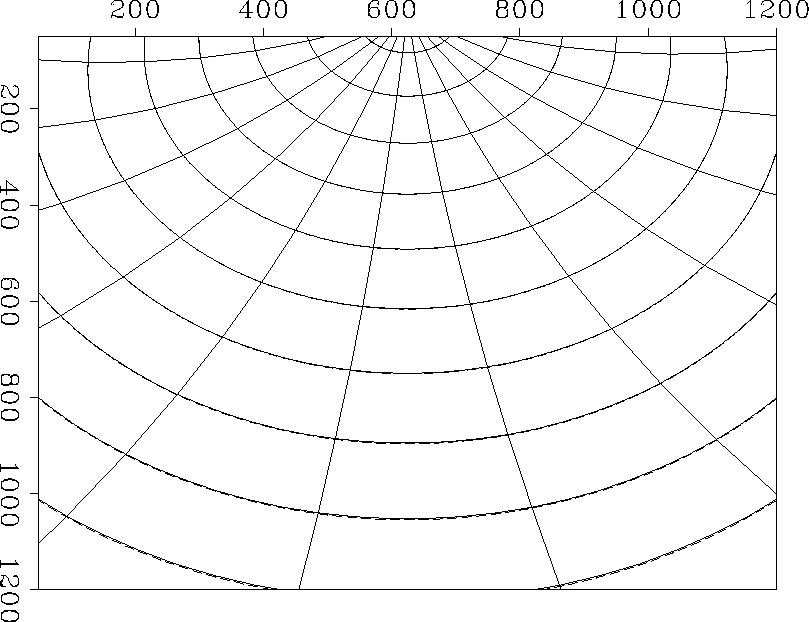In order to prove our program ``works'', we need some ``true'' results from
the same model to check the accuracy of our results. Since dynamic ray
tracing is a high-frequency approximation. Traveltime is usually more
appropriate than amplitude and phase-shift to be chosen to verify a new
algorithm.
Fortunately, we know the theoretical solutions for some simple models, e.g.,
constant velocity or linear velocity. Here we design a linear velocity model
and use it to test our new approach. The size of the whole model is
![]() . The size of each cube is
. The size of each cube is ![]() . The linear velocity model is as following:
. The linear velocity model is as following:
| v(x,y,z) = v0 + a z | (16) |
The theoretical solution of wavefront for this model can be found in Slotnick 1959.
| |
(17) |
| (18) |
Figure 3 shows the numerical result from dynamic ray tracing and the theoretical solution. The ray tracing result agrees with the theoretical result satisfactorily.
|
model1
Figure 3 Solid lines represent numerical result (including ray and wavefront). The dash line represents theoretical result. The wavefront from ray tracing is consistent with the wavefront from equation (17). The raypaths also bend upwards because of the increase of velocity with depth. |  |